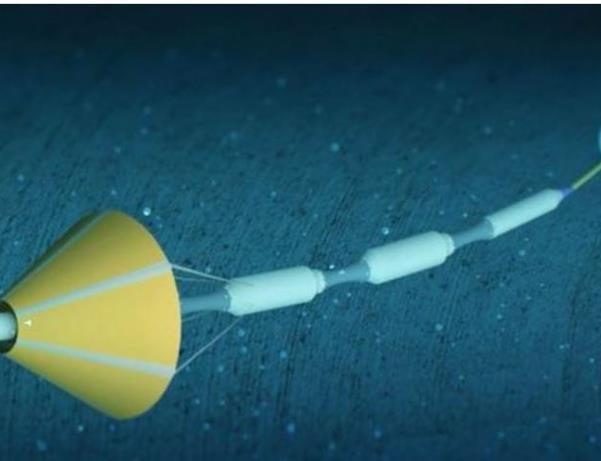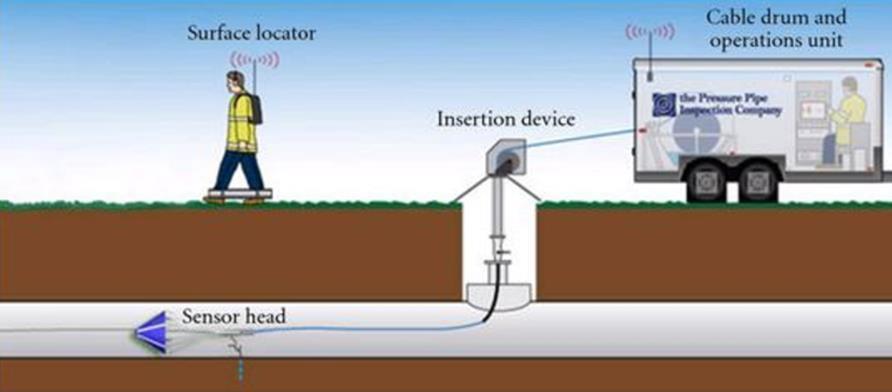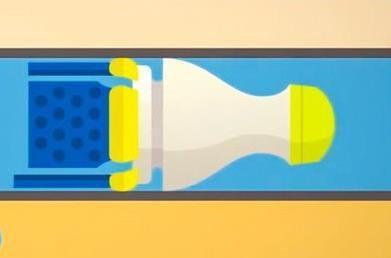
International Research Journal of Engineering and Technology (IRJET) e-ISSN: 2395-0056
Volume: 12 Issue: 01 | Jan 2025 www.irjet.net p-ISSN: 2395-0072


International Research Journal of Engineering and Technology (IRJET) e-ISSN: 2395-0056
Volume: 12 Issue: 01 | Jan 2025 www.irjet.net p-ISSN: 2395-0072
Shashikant Bharat Bhuse
At Post Aundhi Tal. Mohol Dist. Solapur Pin 413248
Dr. Abhijit Kundu, Dept. of civil Engineering, GH Raisoni University, Maharashtra, India
Abstract - Non-Revenue Water (NRW) represents a significant challenge for urban water utilities, resulting in financiallosses,reducedwateravailability,andinefficiencies inwaterdistribution.Thisproject,titled"EnhancingWater Utility Efficiency: Using Bulk & Domestic Water Meters to ReduceNon-RevenueWaterinCityWaterSupplyNetworks fromSourcetoConsumer,"aimstoaddresstheseissuesby implementinganintegratedmeteringapproach.Theproject explorestheuseofbulk watermetersatkeypointsinthe water distribution network, such as treatment plants, reservoirs, and distribution mains, to monitor large-scale waterflowsanddetectsystem-widelosses.Attheconsumer level, domestic water meters provide accurate data on individual consumption, enabling utilities to identify unauthorized usage, address billing discrepancies, and promoteresponsiblewateruse.
Throughreal-timedatacollectionandanalysis,theproposed metering system allows for proactive leak detection, targetedmaintenance,andbetteroverallmanagementofthe water distribution network. By integrating bulk and domestic metering with GIS and SCADA technologies, the projectaimstocreatearobustdatamanagementframework thatenhancesutilitydecision-making,minimizesoperational losses,andimprovesrevenuecollection.Thiscomprehensive approach not only reduces NRW but also strengthens the financialsustainabilityofwaterutilities,ensuresfairbilling, andsupportssustainablewaterresourcemanagement.The project’s findings contribute to a scalable NRW reduction model that can be adapted across various urban settings, pavingthewayformoreresilientandefficientwatersupply systems.
Key Words: 1.NRW, 2. SCADA, 3. Physical losses, 4. Water supply, 5. Water Meter 6. Urban Water Management 7. Jalgaon
1.INTRODUCTION
TheJalgaonCityMunicipalCorporationisthegoverning bodyofthecityofJalgaonintheIndianstateofMaharashtra. Jalgaonis‘D’classMunicipalCorporation.Itwasfoundedin 22Sept.2003.JalgaonMunicipalCorporationservesanarea approximately 68.46Sq. km & provides civil services & facilitiesaroundthe4.60Lackspeople
Jalgaon City’s water supply network experiences significant inefficiencies, with NRW levels exceeding 35%, wellabovetheglobal acceptablebenchmark of15%.NRW encompasses water lost due to leaks, theft, meter inaccuracies,andunbilledconsumption,resultinginfinancial lossesforthemunicipalcorporationandunsustainablewater resourcemanagement.
2.1 Objectives:
Identify NRW sources, including leaks and unauthorized connections.
Implementbulkanddomesticwatermeterstomonitorand reducewaterlosses.
EnhanceutilityefficiencyusingGISandSCADAtechnologies. Promote financial sustainability and equitable billing practices.
2.2 Scope:
This study integrates advanced technologies and public engagement to reduce NRW, focusing on operational improvements, data-driven decision-making, and scalable frameworksadaptabletoothercities.
3.1
The city sources water primarily from the Waghur Dam. WateristreatedatUmaleVillageHavingCapacityof130.00 MLDanddistributedthroughanetworkofagingpipelinesto residential, commercial, and industrial users. Despite sufficient water production, inefficiencies in the network result in high levels of wastage. Additionally, intermittent supply practices lead to pressure fluctuations, further contributingtolosses.

International Research Journal of Engineering and Technology (IRJET) e-ISSN: 2395-0056
Volume: 12 Issue: 01 | Jan 2025 www.irjet.net p-ISSN: 2395-0072
PhysicalLosses:Resultingfrompipelineleaks,storagetank overflows,andinfrastructurefailures.Theselossesaccount fornearly60%oftotalNRWinJalgaon.
CommercialLosses:Arisingfromunauthorizedconnections, metertampering,andbillinginaccuracies.Commerciallosses leadtosignificantrevenuedeficitsfortheutility.
UnbilledAuthorizedConsumption:Includingwaterusedfor firefighting,publicfountains,andothermunicipalpurposes. Thisconsumptionisoftennotaccuratelyrecorded,further contributingtoNRW.
Lackofmeteringandmonitoringsystems.
Deteriorated pipeline infrastructure prone to frequent breakdowns.
Limitedtechnicalcapacityforleakagedetectionandrepair.
Insufficientawarenessamongthepublicabouttheimpactof NRW.
Inadequate financial resources to implement large-scale upgrades.
3.4 Service Level Benchmarks (SLB) for Water supply
Astandardizedsetofkeyperformanceindicatorsrelatedto urban management and service delivery were defined, measuredandbeingreportedonacrossurbanareasbyULBs and other city-level parastatals. The standardization is ensured by setting definitions and units along with data requirements and reliability of measurements (MoHUA, 2009).
ThewaterrelatedServiceLevelBenchmarks(SLBs)focuson extentandaccessibilitytoqualityservicewhileconsidering effectiveness of the system to manage the water supply network including aspects of financial sustainability. The following are the indicators for water services which includestheextentofNRW.
Table1:SLBsforwatersupplyservices.
Credits:MoHUA(2009).HandbookforServiceLevel Benchmarking. http://cpheeo.gov.in/upload/uploadfiles/files/ Handbook.pdf
As per the SLB Handbook, the rationale for introducing ‘Extent of NRW’ indicator is to assess the financial sustainabilityofthewaterutilitybyreducinglosseswhich can be utilized to meet excess demand and defer capitalintensive expenditure to enhance supply capacity. The benchmarkvalueforNRWis20%whichhasbeenachieved by most well-performing utilities in developed countries (MoHUA,2009).
Table2:DatarequirementformeasuringextentofNRW.
a.Totalwater producedand putintothe transmission and distribution system Million litres per month
b.Totalwater sold Million litres per month
Daily quantities should be measured through metering, and records on the transmission and distribution system shouldbemaintained.
Thetotalsupplyforthemonthshouldbe based on the aggregate of the daily quantum.
Theactualvolumeofwatersuppliedto customerswhoarebilledforthewater provided.
Ideally,thisshouldbetheaggregate volumeofwaterconsumedasperwhich consumershavebeenbilled.
NRW NRW=[((a-b)/a)*100]
Credits: MoHUA (2009). Handbook for Service Level Benchmarking. http://cpheeo.gov.in/upload/uploadfiles/files/ Handbook.pdf
AspertheSLBHandbook,thefrequencyofmeasurementof theindicatorshouldbequarterlytobedoneattheULBlevel. Thehighestandpreferredlevelofreliabilityisgiventothose ULBswherequantityofwaterproducediscomputedbased on bulk flow meter measurements at the bulk production pointsandmeteringisundertakenatkeydistributionnodes andtheuser-endforallcategoriesofusers(MoHUA,2009). However,othermethodsofassessmentalongwiththeirlevel of reliability are detailed out in the handbook. The benchmarkvalueforNRWis20%asthecostofreduction belowthebenchmarkoutweighsthebenefits.

International Research Journal of Engineering and Technology (IRJET) e-ISSN: 2395-0056
Volume: 12 Issue: 01 | Jan 2025 www.irjet.net p-ISSN: 2395-0072
In2005,aspartoftheGovernmentofIndia’surbanreform agendaJawaharlalNehruNationalUrbanRenewalMission (JNNURM)effortstostrengthenand empowerurbanlocal bodies.ThistoolkitwaspreparedtoassistULBsintheNRW reduction process for the water supply service system. It detailsthewaterauditingprocessandcalculatinglossesat variouspointsofthewaterdistributionsystem.Thetoolkit providesinitialguidancetoofficialsandpolicymakersinthe watersector(MoHUA,2012).
MostwaterutilitieswithhighNRWfallintoaviciouscycle wherehighlevelsofNRWleadtolowlevelsofefficiency.The marketableproductofa waterutilityistreatedwater,ifa majorityofthistreatedwaterislostinthedistributioncycle, the cost of water collection, treatment and distribution increases and the water sales decrease. This triggers the need for substantial capital expenditure programmers to meet ever-increasing demand which doesn’t address the coreproblem
NRWhasasignificantimpactonwateravailability,power consumption and cost-recovery in a city. In the following scenario based on a real case example we can see the impactsofNRWonthesame.
4.1
Overview:Theinstallationofadvancedmeteringsystemsis a cornerstone of NRW reduction strategies. Digital water meters with automated reading capabilities provide realtimedataonwaterconsumption,enablingbettermonitoring andbillingaccuracy.
Implementation Strategy: InstallationofAMIathousehold, commercial,andindustriallevels.
Integration with central data systems to allow remote monitoring.
Benefits:Accuratemeasurementofwaterusage.
Quick identification of anomalies such as leaks or unauthorizedusage.
Enhancedtransparencyinwaterusageandbillingprocesses.
4.2 Infrastructure Upgrades
Pipeline Replacement: Replacement of old pipelines with modern,durablematerialstoreducephysicallosses.Priority willbegiventoareaswiththehighestreportedleakages.
Pressure Regulation: Installation of pressure-regulating valvestomaintainoptimalpressureandpreventpipebursts. Thesevalvesensurethelongevityofpipelinesandimprove servicereliability.
Technologies Used: Acoustic leak detection, GIS-based mapping,andadvancedsensors.
ActionPlan:Conductingacomprehensivenetworkauditto identifyvulnerablesections.
Developingasystematicmaintenanceandrepairschedule.
Deployingrapidresponseteamsfortimelyrepairs.
Withtheadventofnewtechnologies,in-lineleakdetection techniquesareusedforlargediameterpipelines.Probesare placed in the pipe which picks up leak noises/pressure differences as they pass through it. These methods/techniques are highly sophisticated and need skilled supervision. They may be applicable only under specificconditions,likeavailabilityoffullbore,branchless lengths,absenceofairvalves/scourvalveswhichmaydraw thesensortoitsstub,etc.
Parachute / tethering device is a tool which can be used inpipelineslargerthan150mmdiameterwithouttheneed toputthepipelineoutoftheservice.Thetoolisconnected with the pipes, hence, a leak, air pockets and visual anomaliescanbemonitored.Atapof50mmormoremaybe used to insert the tool into an active pipeline. The flow velocity of the water inflates a small parachute or drogue after the tool is inserted. The parachute pulls the tool through the pipe, with the probelighting the way with its onboardLEDlightingsystem,highlightinganyvisualdefects inthepipelineasshowninFigure1.0Ifthetooldetectsany acousticevents,suchasaleak,theoperatorcanstopthetool at the precise location of the leak, and an above-ground operator can locate the sensor as shown in Figure 1.0, marking the exact leak location within plus or minus 0.5 metres.Thisenablesuserstoknowinrealtimewherethe leaksare,andwhererepairsareneeded.

International Research Journal of Engineering and Technology (IRJET) e-ISSN: 2395-0056
Volume: 12 Issue: 01 | Jan 2025 www.irjet.net p-ISSN: 2395-0072


4.3.1.2 Robot for Leak Detection
Arobotwithasoftrubberskirt/hand(Figure.2.1)attached at the rear end, which fills the diameter of the pipe, is inserted into the system through hydrants, Tee, etc. This robot inspects pipes as it moves/propels with the water throughthepipe,andits"hands"touchthepipetodetectthe suctionforcescreatedbyleaks.Thegadgetissubsequently recoveredwithanetthroughanotherhydrant,anditsdatais uploaded, revealing the location and size of the leak. No diggingisrequired,andthereisnoneedforanyinterruption ofthewaterservice.

Awareness Campaigns: Educating citizens about the importanceofwaterconservationandtheirroleinreducing NRW. Campaigns will include workshops, social media outreach,andschoolprograms.
Reporting Systems: Establishing a helpline and mobile application for citizens to report leaks and illegal connections.
Incentives:Offeringrebatestohouseholdsthatdemonstrate waterconservationpractices.
Staff Training: Equipping municipal staff with the skills requiredforhandlingmodernmeteringsystems,analyzing data,andmanaginginfrastructure.
TaskForce:FormingadedicatedNRWreductiontaskforce withinthemunicipalcorporationtooverseeandcoordinate efforts.
Establishing clear policies to penalize unauthorized connectionsandrewardefficientwaterusage.
Creating guidelines for water auditing and reporting, ensuringaccountabilityatalllevelsofthewaterutility.
This project utilizes Bentley’s Water GEMS software to simulate water network behavior and identify NRW hotspots.GISdata integratesspatial mappingofpipelines, valves,andothernetworkcomponents.Thiessenpolygons delineateserviceareas,enablingprecisepopulationdemand allocation.Scenariomanagementtoolsaidintestingvarious operationalstrategies
Preliminary findings suggest that integrating bulk and domestic water meters can significantly reduce NRW by pinpointingleaksandunauthorizedusage.Thedata-driven framework supports targeted maintenance and enhances revenuerecoverythroughaccuratebilling
Theproposedmeteringsystemoffersascalablemodelfor reducing NRW in urban settings. By leveraging advanced technologies, Jalgaon’s water utility can achieve financial sustainability, operational efficiency, and equitable water distribution. This approach is adaptable for other cities facingsimilarchallenges.

International Research Journal of Engineering and Technology (IRJET) e-ISSN: 2395-0056
Volume: 12 Issue: 01 | Jan 2025 www.irjet.net p-ISSN: 2395-0072
The authors acknowledge the support of the Jalgaon MunicipalCorporationandGHRaisoniUniversityfortheir guidanceandresourcesthroughoutthisstudy.
[1] Singh,R.,&Das,A.(2018).ChallengesofNon-Revenue WaterinIndianCities:ACaseStudyofNagpur.Urban India,38(1),85-94.
[2] Shah,M.,&Kulkarni,S.(2015).WaterMeteringinUrban India: Benefits, Challenges, and Opportunities. *EconomicandPoliticalWeekly,50(31),27-34
[3] Jain,N.,etal.(2016).Non-RevenueWaterManagement inIndianUrbanUtilities.*WaterPolicy,1
[4] Central Public Health and Environmental Engineering Organization (CPHEEO). (2014). Manual on Water SupplyandTreatment.
[5] IndianInstituteforHumanSettlements(IIHS).(2017). UrbanWaterSupplyinIndia:AnOverview.